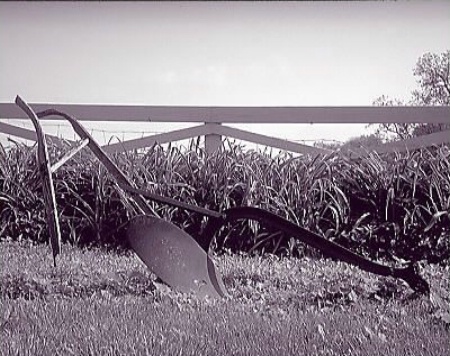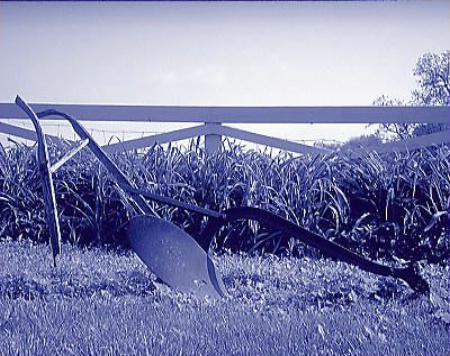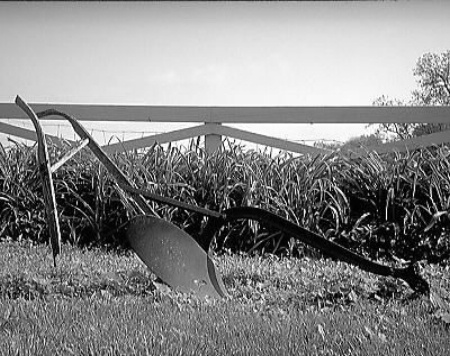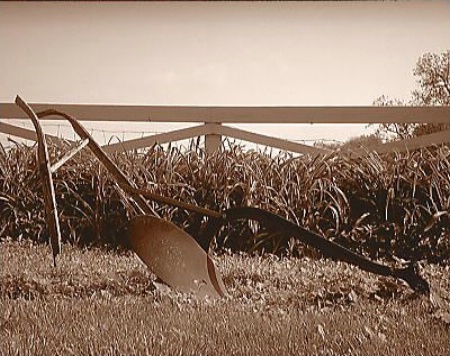
Vasko |
|
Sepia Filters...
Hi, I am planning to buy a sepia filter (I really enjoy the look). Now, my question is to what degree does a sepia filter give that old look that we are all so familiar with. Perhaps there are different degrees of sepia filters... Any help is welcome... Thanks a lot, you guys, and this site rules! Rock on,
August 25, 2001
|
|
|
John A. Lind |
|
|
|
|
|

Tired Old Plow (B/W Orthochromatic)
B/W Agfa Scala 200X image made using a blue filter to simulate orthochrmatic film (note sky is very pale)
John A. Lind
|
|
|
|

Tired Old Plow (Sepia Toning)
Image manipulated to simulated sepia toning of a B/W print.
John A. Lind
|
|
|
|

Tired Old Plow (Gold Toning)
Image manipulated to simulated gold toning of a B/W print with gold chloride.
John A. Lind
|
|
|
|

Tired Old Plow (Cyanotype or Blueprint)
Image manipulated to simulated cyanotype or blueprint process with a B/W print.
John A. Lind
|
|
|
|
Vasko,
It may lend some appearance of it, but not to the extent of a sepia tone B/W print. I would be cautious in that it works much better with scenes that have low color contrast and do not have any bold colors. I don't think using it for subjects with bold contrasting colors such as a bright red, blue and yellow hot air balloon would work very well. IMO a B/W that is sepia toned when printed would likely give more of an "old" look than a sepia filter with color film. If you use one with color negative you must ensure the print processor knows you used a sepia filter, otherwise they're likely to try to color balance it out of the prints (probably with somewhat hideous results)!From what I've been able to piece together about photo history, a B/W print that is sepia toned as part of processing creates something similar to the old albumen prints of the mid-1800's that were not gold toned and are a russett brown color. The brownish color results from very minute silver particles in a colloidal suspension versus the larger particles found in modern silver prints. Other very old processes may have a similar coloration too, but I'm not that up on them. Very early photo papers such as albumen prints (yes, they used egg whites for this) were "gold toned" using gold chloride as it helped make the images last longer. This did not turn them gold colored, but a purple or purple-brown. A similar process used platinum, but it wasn't that common. Later there was a cyanotype or "blue-print" process used that turned prints a blue color. Sepia, gold-toning and cynaotype of a B/W would be more accurate historically. However, the bottom line is what your vision is for your work. I'm uploading a B/W that has been digitally manipulated to simulate sepia toning, gold toning and cyanotype so you can get a feel for what they look like. In actual prints from that era there is considerable variation in their coloration. -- John
August 26, 2001
|
|
|
John A. Lind |
|
|
|
|
|

Tired Old Plow (B/W Ortho)
B/W Agfa Scala 200X made using a blue filter to give an orthochromatic effect (note very pale sky)
John A. Lind
|
|
|
|

Tired Old Plow (Sepia)
B/W image manipulated to simulate sepia toning
John A. Lind
|
|
|
|
Hmmm, it looks like the gold tone and the sepia didn't get picked up correctly, so here they are.
August 26, 2001
|
|
|
Jef Franklin |
|
|
|
|
|

Gothic Princess
Jef Franklin
|
|
|
|
As an inexpensive alternative try pantyhose streched in front of the lense. This gives a soft focus efect at the sametime. Experiment and have fun :)
January 05, 2004
|
|
|
|
Log in to respond or ask your own question.
|